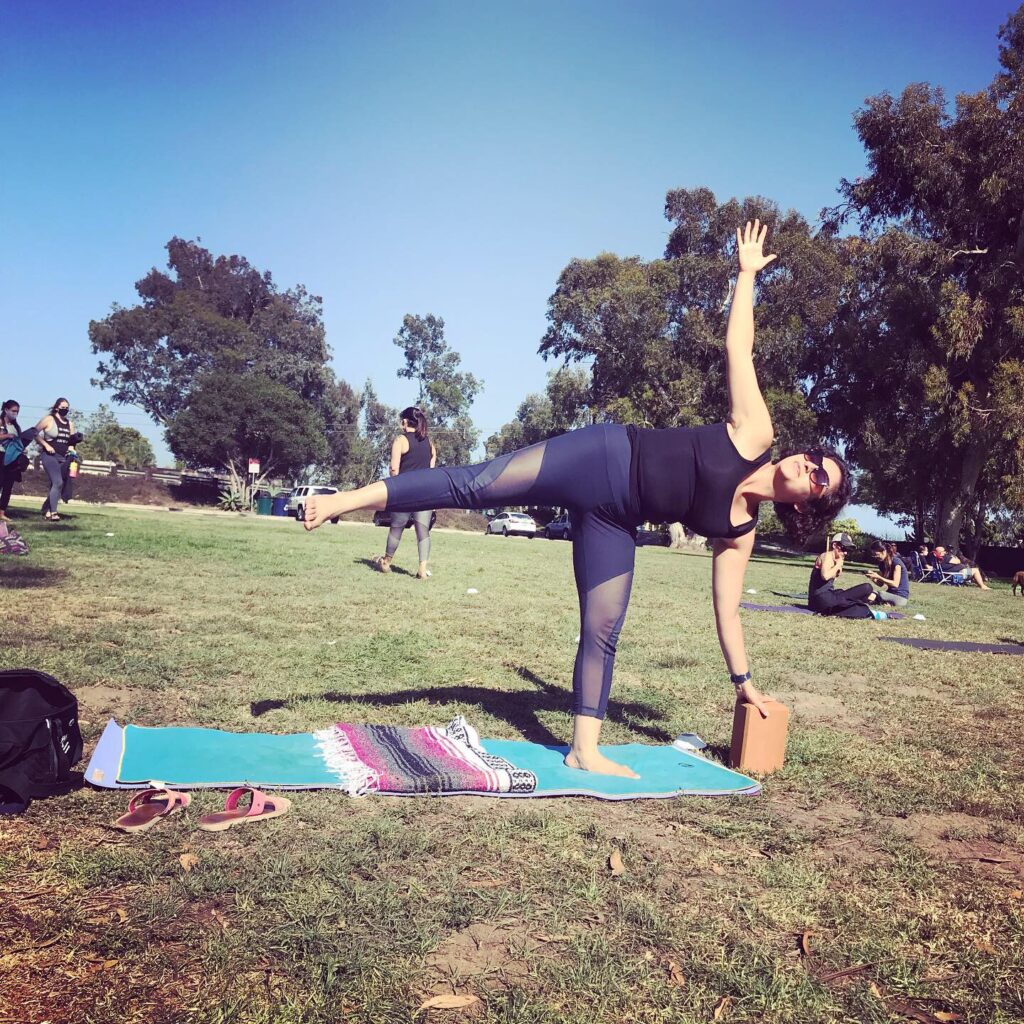Yesterday morning while driving to work I turned on the radio to listen to the news. I felt anxious after 5 minutes and turned the radio off. As much as being informed of current events is important, I would rather put my energy into learning how to be a happier and more positive person.
It’s not always easy to be optimistic or happy, especially with the stresses of everyday life.
However, one powerful tool that I have discovered that can transform our lives and reshape our reality is fostering a positive mindset.
How to be a happier and more positive person (even when life sucks)
Yes, I agree with you, sometimes life can suck.
The pressure of work, relationships, traffic, and the rising cost of living can all add up.
But what if I told you that this little superpower can change your thoughts, actions, your life?
Whether you’re facing personal challenges, professional setbacks, or simply seeking greater fulfillment, I am going to show you some strategies so you can learn how to be a happier and more positive person regardless of your circumstances.
In this article, you will discover practical tips and mindset shifts that can unlock your potential for positivity.

From understanding the science behind the power of positivity to harnessing the transformative force of gratitude, we will explore a range of strategies that can help you flourish in any situation.
But it doesn’t stop there.
As a licensed mental health professional, I’m going to teach you my secret toolbox of changing negative thought patterns.
Trust me, you’ll never be the same once you learn all about this and more.
So, whether you’re a skeptic looking for evidence-based strategies or someone who’s already on the path to positivity and seeking to deepen your understanding, this guide is for you.
Are you ready to transform your life and become a beacon of positivity in a world that desperately needs it?
Understanding the Power of Positivity
Perhaps you’re already optimistic and happy-go-lucky.
Or maybe you are someone who tends to be more anxious and worried.
Whatever the case, discovering how to be a happier and more positive person goes far beyond simply thinking happy thoughts or plastering on a smile.
Cultivating a positive mindset means recognizing that our thoughts, attitudes, and beliefs have a profound impact on our overall well-being and the world around us.

When we consistently choose to focus on the positive aspects of any situation, our minds become more attuned to finding solutions, opportunities, and joy.
It’s like flipping a switch that illuminates the path ahead, allowing us to navigate challenges with resilience and optimism.
The power of positivity lies in its ability to shape our perception, influencing how we interpret events and respond to them.
For example, my husband and I are taking a 17-hour flight to Singapore in a few months. Neither of us likes flying for long distances so the thought of being on a plane for 17 hours is exhausting.
When I told my friend about this she reframed it into something positive. She told me “Think of all the food, naps, and screen time you’ll get!”
Once she changed the perception to something positive and uplifting I realized that she was right!
Research has shown that positivity is contagious, spreading like wildfire through social networks and communities.
When we approach life with a positive attitude, we inspire and uplift those we encounter, creating a ripple effect of optimism that can transform entire environments.
By consciously cultivating positivity, we become catalysts for change, fostering a supportive and thriving atmosphere for everyone around us.
However, fostering a positive mindset requires more than just wishful thinking.
It involves actively challenging and changing negative thought patterns, reframing our experiences, and intentionally seeking out positive influences.
We must create an environment that nurtures positivity, surround ourselves with uplifting people, and engage in self-care practices that promote mental and emotional well-being.
4 Practical Tips for Cultivating a Positive Mindset
Remember, fostering a positive mindset requires more than just wishful thinking.
It involves actively challenging and changing negative thought patterns, reframing our experiences, and intentionally seeking out positive influences. This is not easy to do especially if you are struggling with mental health challenges like depression or anxiety.
As a result, you must work hard to nurture positivity.
You can do so by surrounding yourself with uplifting people, considering seeing a therapist and engaging in self-care practices that promote mental and emotional well-being.
By harnessing this power, you can proactively shape your mindset, cultivate resilience, and live a more fulfilling life.
Now, let’s delve into practical tips that can help us cultivate a positive mindset.,
1. Harnessing the power of gratitude
Want to know my #1 tool that has exponentially helped me cultivate a positive mindset?
It’s no big secret but research has consistently shown that a regular gratitude practice offers numerous physical and psychological benefits.
Benefits of a regular gratitude practice
- Improves your overall well-being
- Boosts your immune system
- Lowers your stress
- Enhances your relationships
By focusing on what we are grateful for, we shift our attention away from negativity and redirect it towards positive experiences, creating a ripple effect that can impact every aspect of our lives.
But how do you get into the habit of being more grateful?
Well, one way to do this is to intentionally focus on what you are grateful for daily.
It can be as simple as being grateful that you have food to eat or a place to live.

You can also focus more on the details like you are grateful for the sound of the wind rustling the trees or the taste of your morning coffee.
When you practice gratitude you are learning how to be a happier and more positive person because you are being mindful, present, and acknowledging the good in your life.
Moreover, recognizing the blessings we often take for granted reminds us of the abundance surrounding us.
Whether it’s being grateful for a supportive friend, a sunny day, or a roof over our heads, practicing gratitude helps us foster a sense of contentment and appreciation for what we already have.
What has helped me is keeping a gratitude journal, where I write down three things I am grateful for each day.

Initially, I was using a paper journal that I kept at my bedside but now I use a free app called Happyfeed which I love!
Another option is to express gratitude verbally, whether it’s through a heartfelt thank you to someone who has helped you or simply taking a moment to take a deep breath and acknowledge the beauty of nature around you.
Repeatedly practicing gratitude and getting into the habit trains your brain to be on the lookout for positive experiences.
This shift in mindset helps us to become more resilient in the face of challenges and allows us to approach life with a greater sense of optimism and joy.
2. Changing Negative Thought Patterns
It is normal to have negative or even weird thoughts that pop into your head.
You are human after all and you can not control what you think.
Unfortunately what tends to happen to some people is that negative thoughts become so pervasive and overbearing that it leads to mental health challenges like depression and anxiety.
Remember, you can’t control your thoughts but you can learn to acknowledge and shift them.
One mantra that I teach my clients and use myself is the following:
“Thoughts are just thoughts. Thoughts are not real.”
Pantea Rahimian
Keep in mind that negative thought patterns often stem from deep-rooted beliefs and past experiences that have conditioned us to perceive the world in a negative light.
My experiences with negative thinking
One pattern of negative thinking I have caught myself in is while I’m doing yoga at my yoga studio.
I look around and see women who are in better shape than I am in and dressed nicer.
The thought that comes to my mind is “I look frumpy and it does not matter how long I work out I will never look like her.”

As I am writing this I realize how ridiculous that thought is and that it is unrealistic that I am comparing myself to someone just by their appearance. But I also understand that this behavior is normal, I just need to not internalize the negative thoughts.
Perhaps you also struggle like I do?
Remember that these negative feedback loops may manifest as self-criticism, self-doubt, or a pessimistic outlook on life.
But just as you can retrain your mind to focus on the positive, you can also rewire your thinking to overcome negative thought patterns.
How to combat negative thinking
Since I’m a therapist, I teach my clients an effective strategy for combating negative thoughts through the use of cognitive behavioral therapy.
To do this practice, the next time you have a negative thought, press pause and examine the thought. Like when you’re watching a show and you press the pause button to understand what just happened, you’re going to do the same thing.
Once you’ve paused, ask yourself the following:
- Is this thought grounded in reality?
- Is this thought based on fear?
- Am I feeling insecure?
When you begin to question your thoughts, you start to dismantle their tight grip on your mindset and therefore your mood.
Another powerful tool you can use is to reframe your thoughts.
Remember the example I used earlier about my 17-hour flight?
Reframing means that you shift your perspective of a situation or a thought into something more positive and empowering.
One of the best ways to reframe something is from a stressful or negative experience.
For example, if you get negative feedback on a project you did at work, instead of harping on yourself for it, reframe it as a valuable learning opportunity or a stepping stone toward growth.
To be a happier and more positive person, start reframing your thoughts and experiences.
This allows you to take control of your thoughts and reposition yourself as the architect of your reality.
3. Creating a Supportive Environment
Are you eager to be a happier and more positive person?
Then start surrounding yourself with a supportive environment.
Everything we interact with daily impacts our energy level, mood, and mental, emotional, and physical health.
Some of these factors you have no control over, like the long commute to work or how other people react.
However, you do have control over who you interact with, what you read and listen to in your free time as well as what you consume.

If you fuel your body with junk food, listen to and watch traumatic stories and movies then you will likely find yourself in a sad or anxious mood.
On the other hand, seeking out uplifting books, articles, and podcasts change how you feel.
My go-to mood boosters
Perhaps one of the biggest mood changes I noticed was that I stopped listening to the news in the morning while driving to work and started listening to the Duolingo Spanish Podcast.
While simultaneously improving my Spanish, I also listen to uplifting stories that make me happy and relaxed before I start my workday.
More importantly, spending time with supportive and like-minded individuals helps create a nourishing backdrop for your mindset shift.
If you notice that certain people bring you down, suck your energy, or create unnecessary drama in your life then it’s important to set boundaries and disengage from them.

Focus your energy on spending time with people whose energy is infectious. This lifts you and encourages you to keep going.
What I have learned from a lot of trial and error is that a supportive environment is critical because it helps reinforce and encourage us as we try to change and become a happier and more positive person.
“I am the master of my fate. I am the captain of my soul”
William Ernest Henley
Stop engaging in activities that drain your energy or people who bring you down. In doing so, you will create space for more positivity and remove unnecessary obstacles that hinder your progress.
Lastly, remember that you are in charge of who and what you choose to allow into your life.
4. Nurturing Self-Compassion and Self-Care
It is important to engage in self-compassion and self-care as you embark on this journey of cultivating happiness and positivity.
Unsure what self-compassion means?
The best definition I’ve found is that you treat yourself with the same level of compassion and understanding that you extend to your best friend.

Moreover, you recognize your worth and embrace your strengths and weaknesses without judgment.
What is beautiful about a self-compassion practice is that you will become your own strongest ally. In times of adversity, you will offer yourself encouragement and support by being kind to yourself.
The result is that you will become more resilient and fortify your positive mindset.
In addition to self-compassion, self-care is equally essential for maintaining a positive mindset.
By now you probably know that I’m passionate about self-care so remember, just as plants need water and sunlight to grow, we also require nourishment and nurturing to thrive.
I define self-care as the intentional practice of taking care of your physical, emotional, and mental health.

Take control. Feel better.
Start your Self-care Journey.
Take control.
Feel better.
Start your
Self-care Journey.
Self-care looks different for each person and you can create your self-care routine by downloading my free interactive self-care guide.
In short, self-care involves engaging in activities that bring you joy and help you feel calmer.
For example, practicing mindfulness, getting enough rest, and fueling yourself with nutritious food are all ways of practicing self-care.

What I’ve noticed is that my commitment to self-care helps me nurture myself, replenish my energy, reduce my stress, and most importantly reduce my anxiety.
When you cultivate self-compassion and self-care, you value and prioritize yourself. This helps strengthen your ability to face challenges, overcome obstacles, and maintain a positive outlook.
Wrap-up
Although I’m not always a happy or positive person, I have committed to focusing on fostering this type of outlook because I feel better. As a result, those around me also feel happier since I am modeling positivity.
When you begin to incorporate these strategies into your life, you will realize that you have the power to transform not only your own life but also the lives of those around you.
Remember, positivity is a choice, and it can bring about profound change. As you start making these changes, you will see how it impacts your relationships, your work, and every aspect of your life.
Are you ready to start your positivity revolution today?
What do you recommend to those who want to learn how to be a happier and more positive person? What works well for you and what has not been helpful? Please share your stories and comments below.




6 Responses
What an excellent post! I added it to my favorites list so I can spread it around as needed.
Awesome thanks so much!
I love this and honestly a thing that is mentioned that has helped me so much is just being grateful. I keep a gratitude journal that I try to write on every day just to remind myself how lucky I am and how the small things I take for granted are also things to be grateful for. This immediately changes my mood. Great post!
I love that you use a gratitude journal and that it is a reminder to be grateful for the little things. I do the same and I’ve noticed that I start looking for positive things to add to my journal. Looks like we have the same positive habit!
I think it’s so important to see the good (even) of the worst situations in life 🙂 It’s all about how we look at what happens to us and how we decide to react. Thank you for this reminder!
You’re so welcome!